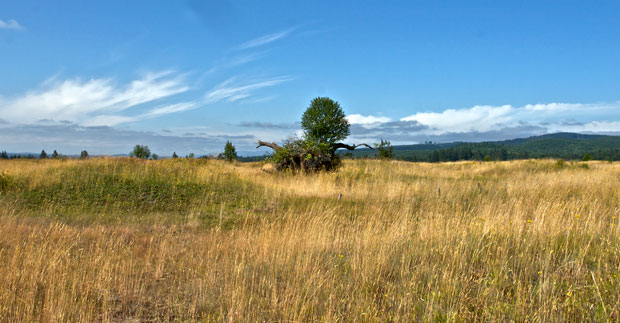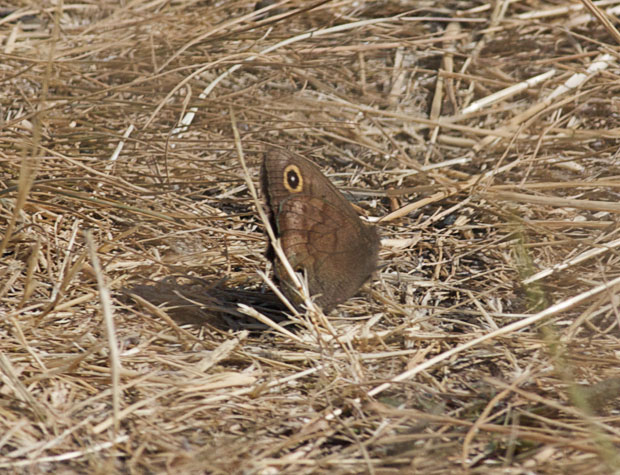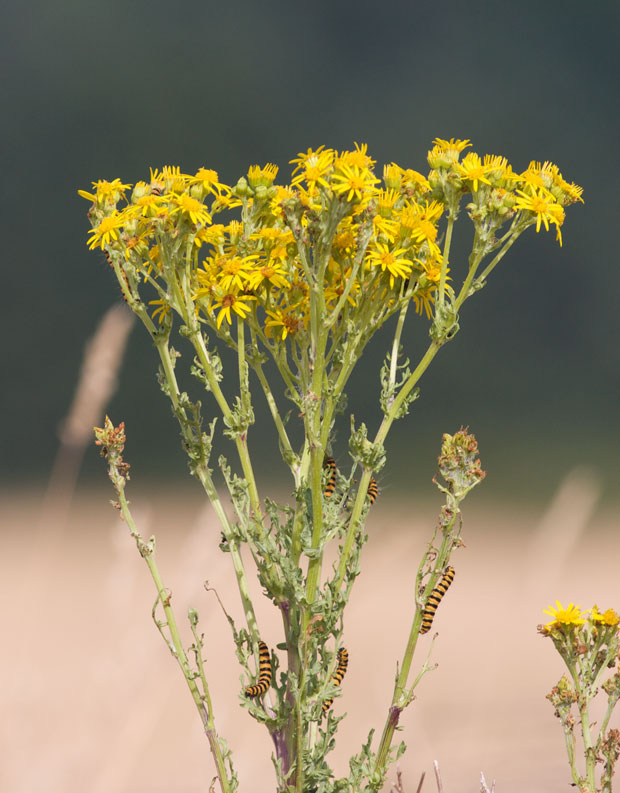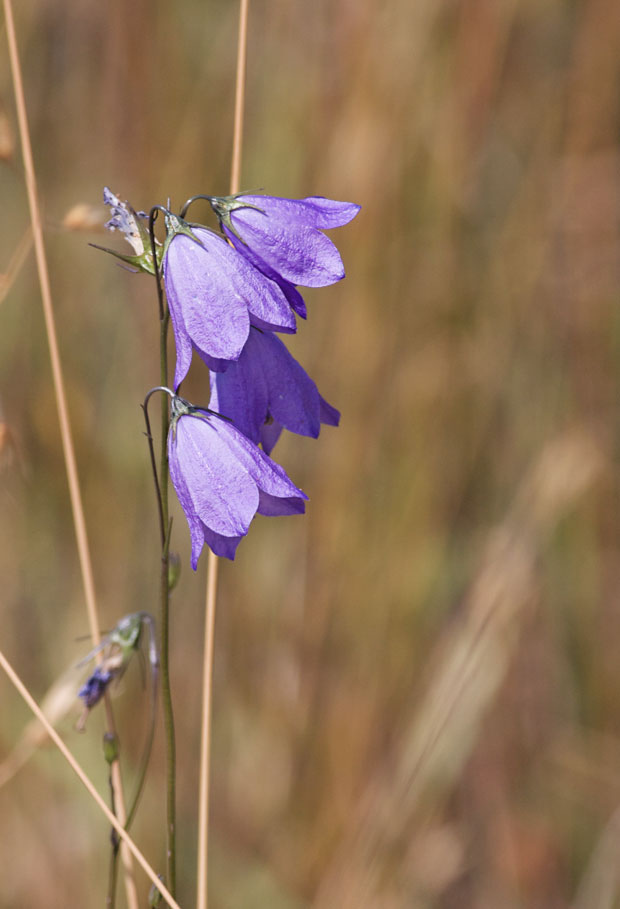My trip Friday to Mima Mounds south of Olympia turned out to be somewhat disappointing. First, I was greeted by a burst of gunfire that made Nisqually seem quiet. They must have been having a rifle competition at a nearby gun range, as there were numerous RV’s and tents pitched in the field next to it.
Still, the sun was beginning to break through, and this was the largest “prairie” I’ve ever seen in Western Washington. For a moment it seemed like I had been transported to Eastern Washington:

I’d come here because the area is known for its butterflies and flowers. Unfortunately, I only saw two varieties of butterflies, a white one, and this Common Wood Nymph,

though the sheer number of caterpillars on this flower would suggest that the field must blossom with butterflies if you come at the right time.

There weren’t many flowers, either, and the information kiosk informed visitors that flowers start early in spring and then bloom in succession all summer long.
The dominant flower Friday was this delicate Harebell.

Of course, I’d discovered this site in a birding book, but they’d warned that the best time to come was during the Spring and Fall migration, so I wasn’t surprised that all I saw were a few Barn Swallows.
Hopefully I’ll remember to return here next Spring or in early summer when more flowers are in bloom and there are more butterflies. You’d think by now I’d be more in tune with the seasons, but old, institutional habits are hard to break.
If the weather improves by the end of next week, I’ll be up in the mountains seeing if that’s where all the birds have gone.

I think those caterpillars are Cinnabar moth caterpillars on Ragwort – fairly common in the UK.
Ragwort is considered dangerous to horses here – so horse owners try to eradicate it. In a way this is a shame as it is food for some butterflies but a friend lost a dearly loved donkey through his eating ragwort.
The harebells (not quite sure of their size from your picture) are beautiful. They grow in our hedgerows on the farm and are always a welcome sight for their delicacy and clear colour. Here in Yorkshire, UK they are small and tremble gently in the breeze. I believe they are also the original “blue bells of Scotland” in the folk song.